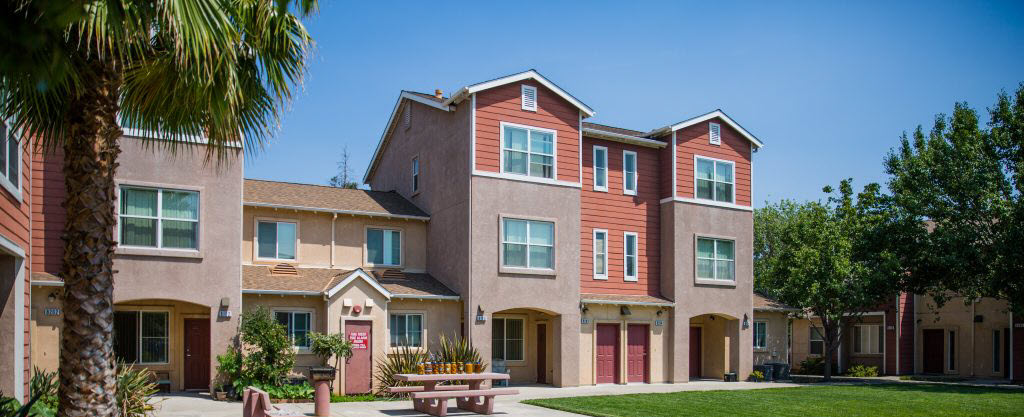

The interim alternative Affordable Rental Housing Ordinance is set to sunset in a few weeks. Council is being asked to pass an amendment that would extend the sunset date of the current interim affordable alternative rental housing requirements through May 31, 2020.
Staff notes: “The current interim ordinance is intended to serve as a bridge that would allow City Council to act on multifamily development proposals with a project-specific affordable housing plan with less than 35% of the units being designated as affordable housing, while staff prepares a comprehensive update to the inclusionary requirements for multifamily projects for further City Council consideration.”
Staff also points out that, by extending the interim ordinance, it will allow them to receive SB 2 funds “that have been requested to assist in further analysis of affordable housing alternatives for various housing development scenarios.”
In addition, the city is working on the Draft Downtown Davis Specific Plan that would be impacted by the city’s affordable rental ordinance.
Staff writes: “Should City Council choose not to adopt the proposed ordinance amendment, Council would be precluded from affirming housing proposals that do not fully comply with the existing 35% affordability requirement.”
They argue: “The proposed ordinance amendment extending the sunset date for the current interim ordinance would continue to allow for City Council consideration of project specific affordable housing plans subject to specific considerations previously approved by City Council as described in the current interim ordinance.”
The sole modification proposed to the current interim ordinance in the proposed amendment is extending the sunset date from June 30, 2019, to May 31, 2020.
Back on November 27, the council put forward interim provisions for extending the city’s affordable housing requirement. But they also put forward potential changes to the requirements for vertical  mixed-use developments, which were previously exempt from affordable housing requirements.
mixed-use developments, which were previously exempt from affordable housing requirements.
At the December 18, 2018, meeting, the council modified the ordinance to include inclusionary requirements for stacked flat condominiums and vertical mixed-use development.
At the time, the council voted to replace the previous exemptions to the affordable housing ordinance for such developments and replace them with a more flexible requirement that allows the council to adjust the inclusionary percentage up or down, based on the size of the project and the targeted income levels.
Councilmember Will Arnold said that, at the bottom line, “we want to see these things built.” He was concerned that if they made the requirements too high, “nothing would be built.”
Councilmember Arnold said, “35 percent of nothing, is nothing. So if the thing doesn’t get built because we’ve put an onerous requirement on there, then no one gets to live there… So that’s the balancing act that we have in front of us.”
Will Arnold pushed for a core area carve out, which he felt along with adding flexibility “gives me a comfort level.” He said, “We don’t want people not to redevelop because of this.”
Brett Lee stated that “while vertical mixed-use and stacked flats (in the core) do not have a numerical requirement, there is an expectation that they will provide some level of resources for the city’s affordability program.”
Thus at the November 27 discussion, the council decided that “the inclusionary requirements for vertical mixed-use and stacked condominiums should be lower than other residential development prototypes” and “the inclusionary requirements for vertical mixed-use and stacked condominiums should be more flexible in the core area than other parts of the City.”
But finding the permanent ordinance level is going to depend on a number of factors that have not yet been finalized.
For instance, staff points out that SB 2 establishes a permanent source of revenue intended to increase the affordable housing stock in California. Part of that includes the California Department of Housing and Community Development (HCD) to use half of the revenue generated by SB 2 to create a “planning grant program to fund local government activities that streamline housing approvals and accelerate housing production.”
The city has requested around $20,000 for additional funding to build on the economic analysis completed in 2018 regarding affordable housing.
Staff argues: “In discussions with HCD, staff has a high degree of confidence that funding of this request is likely. Extending the sunset date of the current interim ordinance provides an opportunity to use grant funds to further refine the financial analysis and inform effective tools in producing inclusionary units that will inform a permanent ordinance.”
In addition, the city is in the process of preparing the Downtown Davis Specific Plan. The release of the draft plan is slated for late in the summer, which will be followed by a 120-day review period.
Staff argues: “Having the project description that establishes the potential development patterns and future housing opportunities in the downtown area will be of benefit for purposes of considering a future permanent ordinance.”
The staff is also waiting for the new RHNA (Regional Housing Needs Allocation) numbers that will update the housing requirements for the next eight-year cycle, including affordable housing numbers.
Writes staff, “Having these numbers will provide a better baseline for targeted and strategic planning efforts relative to affordable housing requirements.”
—David M. Greenwald reporting


Could one define “a carve out”.